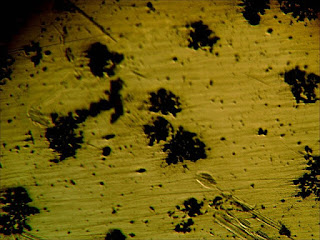What Is Cast Iron? Different Types Of Cast Iron And Their Properties
🔗Different alloying elements and their properties
What is cast iron?
Cast iron is the iron-carbon alloy with a carbon content greater than 2 percentage (varies from 1.7% to 4.5%). Cast iron is produced from pig iron, it can be made by either directly from molten pig iron or by re-melting pig iron with limestone and carbon (coke) in blast furnace known as cupola. Even though it takes various steps to remove undesirable contaminants, the pig iron usually contains a small amount of silicon, manganese, Sulphur, phosphorous etc. Depending on the required properties, the amount of these impurities are adjusted to the desired levels.The cast iron is cheap and shows good casting characteristics. It possesses excellent machinability, high wear resistant, and compressive strength. The compressive strength of cast iron is greater than its tensile strength. The cast iron is brittle, for that reason they are not suitable for machine parts subjected to shock. The ultimate strength of cast iron is given below.
Tensile strength = 100 to 200 Mpa
Compressive strength = 400 to 1000 Mpa
Shear strength = 120 Mpa
Types of cast iron and their composition, properties and characteristics
Grey cast iron
Composition: Carbon = 3 - 3.5%, Silicon = 1 - 2.75%, Manganese = 0.4 – 1%, Phosphorous = 0.15 - 1%, Sulphur = 0.02 - 0.15%
Properties: High compressive strength, low tensile strength, brittle, vibration damping features, machinability better than steel, good fluidity, low ductility, low impact strength.
It is an ordinary commercial cast iron. It is grey colored because it contains the carbon in the form of free graphite flakes. One of the favorable properties of grey cast iron is that the free graphite in the structure act as a lubricant. For this reason, this type of cast iron recommended for the machine parts where the sliding action occurs.
Application: Machine tool bodies, flywheels, automotive cylinder blocks and heads, pipe and pipe fittings.
White cast iron
Composition: Carbon = 1.75- 2.3%, Silicon = 0.85- 1.2%, Manganese = less than 0.4%, Phosphorous = less than 0.2%, Sulphur = less than 0.12%.Properties: Low compressive strength, high tensile strength, abrasive wear resistant, hard, brittle, normally not machinable, poor fluidity
White cast iron has no graphite in its structure, all the carbon in the form of carbide (cementite). So it is in white color and shows white fracture. It is one of the hardest form cast iron. It cannot be machined by ordinary cutting tools, and require grinding tools for the shaping of white cast iron.
Application: Car wheels, jaw crusher plates, rolls for crushing grains, wearing surfaces of pumps like impeller and volute.
Malleable cast iron
Properties: High yield strength, shock resistant than grey cast iron, malleable, ductile, low coefficient of thermal expansion, possess good machinability index.
The all carbon present in the malleable cast iron is in cementite form. It starts as a white cast iron then by annealing heat treatment it is transformed into a malleable form. According to the chemical composition, cycle of the annealing process, the malleable cast iron classified into (i) blackheart malleable iron, (Ii) whiteheart malleable iron and (iii) pearlitic malleable iron. The slow process allows surface tension to form carbon into irregularly shaped spherical or nodular particles rather than flakes. It possesses very good ductility, so it can be bent without fracture. Generally, the properties of malleable cast iron are similar to mild steel.
Application: Used where the machine parts require good tensile strength and ductility, electrical fittings, pipe fittings, door hinges, wagon wheels, hand tools, automotive crankshafts, railroads etc
🔗Different types of malleable cast iron – Whiteheart, Blackheart and Pearlite
🔗Quick difference between Whiteheart process and Blackheart process
Chilled cast iron
It is the type of white cast iron produced by quick cooling of molten iron. The process of quick cooling generally known as chilling (the reason for the name ‘chilled cast iron’). Every casting undergo chilling at its outer layer when molten iron contact with cold sand of the mold. Sometimes the cast gets chilled accidentally to a considerable depth. In other cases, chilling is done intentionally by using inserts know as chill in the mold. The use of chills results in the hard surface of cast.Nodular or spheroidal cast iron
Composition: Carbon = 3.2 - 4.2%, Silicon = 1 - 4%, Manganese = 0.5 - 1%, Phosphorous = 0.18%, Sulphur = 0.2%.
Properties: Generally properties of nodular cast iron is similar to malleable iron. High tensile strength, good machinability, castability, wear resistant toughness, weldability, ductility, pressure tightness, shock and impact resistant, intermediate damping capacity.
It is also called ductile cast iron. Adding a small amount of nodulizing elements (eg: magnesium) to the molten grey iron helps to graphite takes the form of nodule/ spheroid instead of angular flakes. This type of iron is used when casting required shock and impact resisting properties. The rounded nodules inhibit the formation cracks thus increase the ductility.
Application: Hydraulic cylinders, power transmission equipment, rolls for rolling mill, iron pipe used for water and sewer lines, pumps and compressor.
Mottled cast iron
Composition: Carbon = 1.75%Properties: Good fluidity, less tendency to rust compared to gray cast iron.
It is a product in between the grey and white cast iron in color, composition, and general properties. Its strength and hardness vary with the ratio of free and combined carbon.
Application: Manhole cover, lamp post, fire plugs





